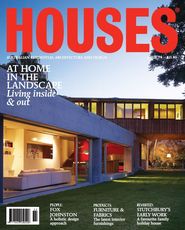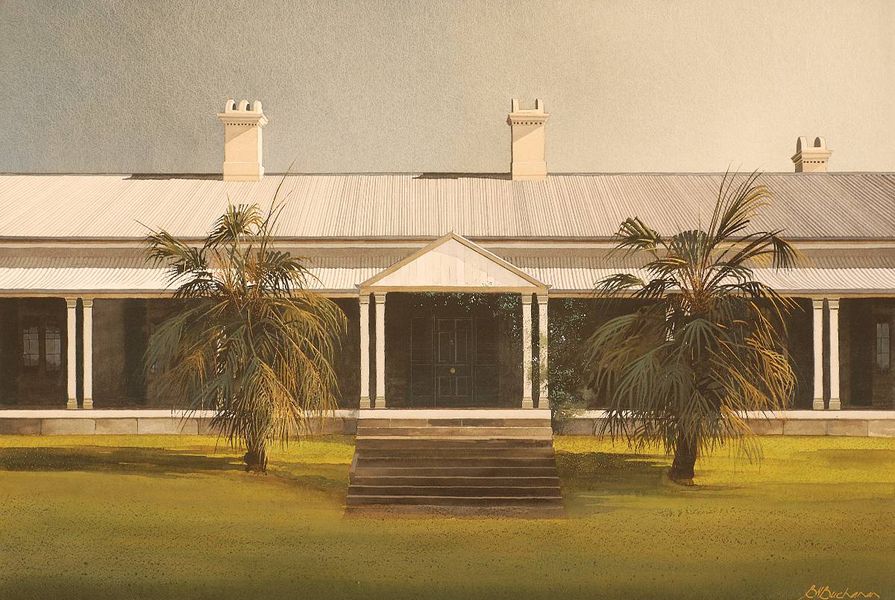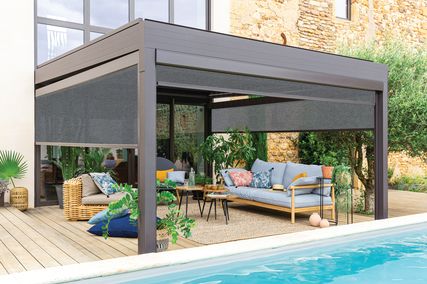House portraiture is a gracious art. Gentlemanly types in seventeenth-century Britain encouraged the form, commissioning charming, usually highly composed images of their grand homes in picturesque settings. Colonial Australians adopted the habit more than a century later, when artists like Conrad Martens, Eugène von Guérard and Henry Gritten depicted the homes of wealthy merchants and pastoralists with a romantic overlay. Recorded for posterity, the images often viewed the homes in long perspective and in Arcadian settings, heightening not only their architectural splendour, but also their remoteness and sense of unattainability.
Mel Robson, Belmont, 2008, slip-cast porcelain with decals.
Image: Mel Robson
By the late 1800s the township of Ipswich, west of Brisbane, boasted its own enclave of wealthy merchants, graziers and industrialists. A slew of wonderful homes stands there today as a legacy to the forebears and to better times, when the then-prosperous town vied to become the state’s capital as separation from New South Wales took effect. The charm and abundance of these old timers and their close relationship to the local history and people was the source of a recent exhibition at the Ipswich Art Gallery. The Ipswich House: Heritage House Portraits by Contemporary Queensland Artists offers contemporary interpretations and examinations of the houses’ architecture and the “stories” of their occupants. There is a keen undercurrent of civitas in the conception, which melds nicely with the institution’s focus on social history and all things local.
Curator and gallery director Michael Beckmann was enchanted by the intact streetscapes he discovered in the city, and the long heritage evident in the existence of many descendants of original settlers. Building activity in Ipswich flourished between the 1850s and World War I, giving rise to some fine architecture and innovative responses to the demands of the harsh climate. Michael hand-picked thirteen contemporary artists (each with roots in Queensland) to respond to a house of their choice. Many of the houses selected have born witness to multiple uses, adaptations and custodians over the years, and these narratives also form part of the exhibition’s content. Many are in a state of benign neglect, as evidenced in the current photographs that hang beside the commissioned works. Early shots of the homes are also hung as a reference point for the documentations and extrapolations that follow.
Oldest on the list is Claremont, a late Georgian sandstone villa built in the 1850s, before Queensland separated from New South Wales. Bruce Buchanan’s luminous, large-scale watercolours depict the purity and Palladian restraint of the home. Buchanan lived in Claremont with his family during the 1980s, when they served as curators for the National Trust of Australia. His intimate knowledge of the house combined with his architectural background render the paintings both poignant and exacting.
Ceramicist Mel Robson responded to the stories surrounding the home Belmont. In a suite of ten delicate porcelain vessels, Robson records the original Deed of Purchase of the property, some childhood memoirs from the original owner and an excerpt from a poem by Thomas Shapcott, also a former owner of the house. The intricate tracery of its wrought iron balustrades is featured on the surface of three black beakers.
Annie Hogan, Upward, 2006, type C photograph
Image: Annie Hogan
While many of the artists tackled the homes’ exteriors, photographer Annie Hogan extended her explorations of suggestive interiors. Her empty spaces are devoid of habitation but redolent of a sense of recent abandonment. Hogan’s carefully manipulated images record the hallways and rooms of the Manse, once a Congregational church parsonage. The images are shot from a low height – that of a child’s – and elaborate on a child’s often binary experience of a space: of “keen anticipation and trembling fear” as to who may soon enter the spaces.
Crumbling gardenscapes are captured in both Carl Warner’s photographs and Maureen Hansen’s vigorous brushwork, and, in a more foreboding way, in Jane Burton’s manipulated images of exfoliating walls and towering trees. Madeleine Kelly interprets the history of Fairy Knoll’s timber millers through a series of ghostly dreamscapes, while Noel McKenna goes to the core of the homes’ pedestrian qualities in his suite of watercolours depicting four near-identical houses in a street. Anonymous and humble, the homes nevertheless tell of the boom time when complex decorative ornamentations were desirable accessories for workers’ cottages.
Barbara Heath, Christina Waterson and Judy Barrass each deconstruct the architecture of their subject homes with widely diverse results. Heath’s miniature stainless steel constructions employ, in their precise perforations, decorative patterns recorded from two historic homes, and echo the process of make-do assemblage characteristic of Queensland architecture. Waterson also works with pattern, constructing stacked and folded paper into a coda of architectural spaces inherent in the changes of height and shadow on their surface. Barrass takes a more narrative approach, cobbling together fragments and artifacts from Rockton into a folding sampler of curiosities. On an opposing tack, Michael Zavros depicts the classical white marble hearth of Garowie as a complete entity, using the hearth as a generic symbol of the home’s heart and thus a vessel of all its stories. Zavros’s depiction of the sepulchral surfaces with a blackened maw at the centre lends the image a deathly finality.
Perhaps playing more consciously with Georgian pictorial traditions of house portraiture, photographer Richard Stringer records Gooloowan in a black and white series with a sense of understated grandeur. The works bear witness to his long-term labour of documenting the house over the last forty years, unfolding a love and superb mastery of the subject.
Source

Discussion
Published online: 13 May 1950
Words:
Margie Fraser
Images:
Annie Hogan,
Barbara Heath,
Bruce Buchanan,
Carl Warner,
Christina Waterson,
Mel Robson,
Richard Stringer
Issue
Houses, April 2011
























